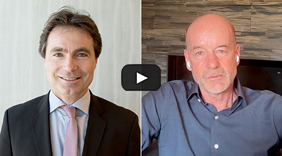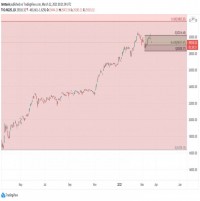|
Overcoming Challenges in Building a System Quantitative trading continues to attract people from technical fields. Often these newcomers develop their own systematic approach to markets. Here is an insightful account of one such enterprise. Jean-Marc Molina worked for information technology start-ups and BMC Software – an international software company – after getting a degree in computer science from the Ecole Nationale Supérieure de Techniques Avancées. In the mid-1990s, he became interested in financial markets and started to trade. In February 2008 he founded a firm, IT-LYSE, to do algorithmic trading research. The IT-LYSE team includes Bernard Prats Desclaux, an experienced trader and author of a book about trading futures contracts, published and well received in France. Another partner is Arnaud le Déault, an aircraft engineer who worked for Air France from 1999 to 2009. He brings an understanding of risk management honed in aeronautics. After back testing showed promise, IT-LYSE started to trade with real money this January. The program trades DJ Eurostoxx50 futures. Below Mr. Molina discusses the pitfalls and opportunities in developing an algorithmic system.
"The 2000-2008 back tests gave excellent results, but perhaps the toughest test is 2009." When I started to trade for myself in the 1990s, I used fundamental analysis. I examined company balance sheets and earnings forecasts to find value or growth prospects, mainly investing in the sector I know very well, IT. At that time I did not believe there was real value in technical analysis. But when the mortgage crisis erupted in 2007, I felt the market was going to be shaky and I could not continue investing in the same way. At this time my friend Arnaud le Déault came up with an interesting algorithm. But when we used it to trade, there was a big loss. We investigated why the algorithm failed and quickly found out that the model was over-fitted to historical data. We had built an algorithm that contained many parameters and worked perfectly in the past. This is a common error. Fortunately, I had not put much money into it! That was not the most promising beginning, but I decided that algorithmic trading held promise. At the beginning of 2008 I founded IT-LYSE and built a research team to work with me. We've received equity capital from two external investors.
Parallel Opportunities Our approach is not to try to predict market moves but to model what a good proprietary trader would do-to try to find the main patterns that a prop trader would use and put those into the program. We wanted to build a model as close as possible to the psychological patterns found in markets. The idea is not to have one algorithm that will do everything but to have algorithms that go after specific market psychologies like greed, panic or profit taking. It took about two years to build the system we call the Parallel Opportunity Trading System. It contains eight strategies, diversified to catch returns in both bull and bear markets on European equity index futures. Six are intra-day strategies where positions typically last for a few hours, including a contrarian strategy as well as several trend-following algorithms. We are not high-frequency traders-the average time in market is about 3.5 hours. The risk taken on each trade depends on market volatility and is generally below 1% of the trading capital. The other two strategies are swing strategies that typically last for a few days. One is a contrarian short strategy and the other a long-term trend-following algorithm. We find that swing algorithms gives you better performance in bull markets, where it is harder to catch big gains with intraday trading because there is generally less volatility. To make sure we're not trapped into over-fitting, we did the back tests on out-of-sample data-that is, data not used to build the algorithms. The 2000-2008 back tests gave excellent results, but perhaps the toughest test is 2009, when most commodity trading advisors lost money. In the back test on 2009 out-of -sample data, while not all the intraday strategies performed well, the long swing strategy had excellent results and the complete Parallel Opportunity Trading System's performance was consistent with what we observed for previous years. This year we started trading with real money. Our system returned about 2.3% as of April. That is not a very high return but it is what we expected in these market conditions. We hope performance will continue as expected while we plan our next step, which will probably be to register as a CTA. We may also consider the opportunity of joining a hedge fund. |
|
This article was published in Opalesque Futures Intelligence.
|





 RSS
RSS











